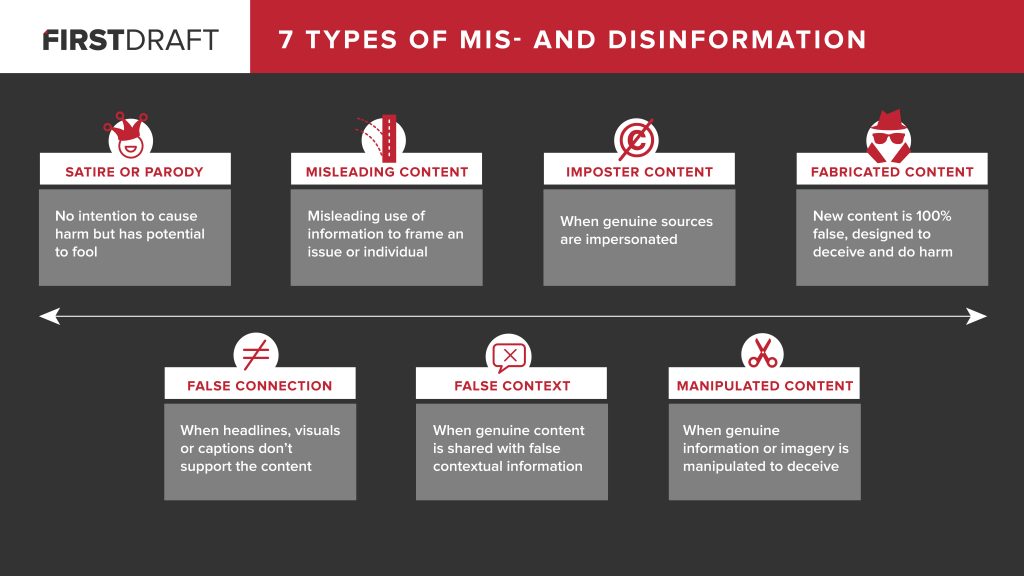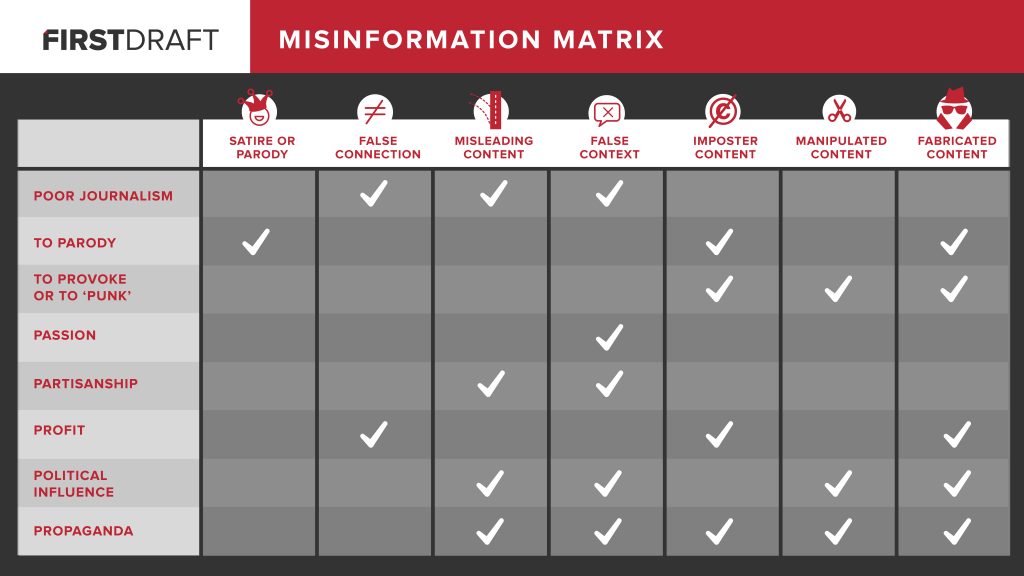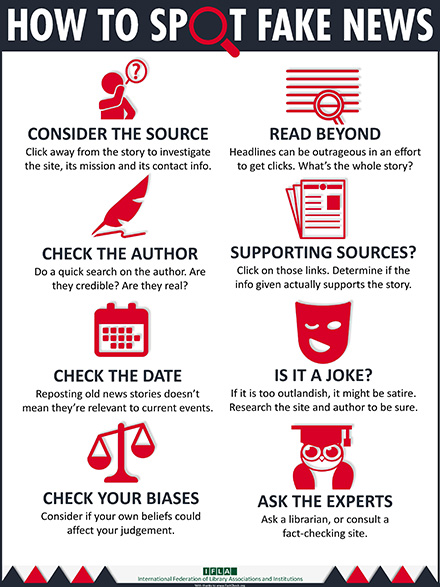

Claire Wardle from First Draft has created these visuals to help visualize the differences between types of misinformation and disinformation. They serve as an easy way to tell what category an article, story, etc., might fall into.
The idea that falsification of information can only happen in the news, exists as a gross oversimplification of misinformation/disinformation in the current age. One of the unfortunate consequences of the phrase "fake news" is that the phrase itself now carries political connotations with it. Once something has been politicized, it becomes rather difficult to see it outside of that sphere of influence. It would be great if the phrase could be mentioned and the first thought that populates has to do with misinformation, however, that is not the case, as many are likely to connect it to a politician and dismiss anything they say on the basis of being labeled fake news by someone they follow or respect. The importance of analyzing the phrase from many different angles cannot be understated, and contributes to growth in information literacy.
How can the culture and ideas surrounding fake news actually be of benefit to those interested in increasing their level of understanding of information literacy? The connection between the two exists, those who would like to be able to discern fake from real, credible from untrustworthy, and all manner of misinformation, need to understand the concept of information literacy first. Before accepting any information as true, learn to ask questions. Being inquisitive leads to a better understanding of a topic and fuels further investigation.
In Donald Barclay's book "Fake News, Propaganda, and Plain Old Lies: How to Find Trustworthy Information in the Digital Age" (2018), he writes about certain questions you can ask yourself to determine the credibility of information. When you need to evaluate the credibility of information, there are some logical steps you can take, keeping in mind that the search for credible information must cover all sides of the conversation. Resist the temptation to pick one source as the answer to all questions you might have about a subject. If you can answer the following questions about a source before considering it to be the truth, you might be more likely to consider other sources and work towards finding the truth.
1. Who created the information?
2. Who published the information?
3. What comes after the headline?
4. What sources are cited?
5. How old is the information?
6. What do others think about the information?
7. Is the information a primary or secondary source?
8. Is the information a joke?
9. Is the information different from anything you have ever seen?

This is a list of websites compiled to assist in the evaluation of information. When evaluating pieces of information, be sure to check it against various sources, do not settle for the first one you like. If you come across one fact checker you like, mark it and continue looking for a few others you can also come back to.